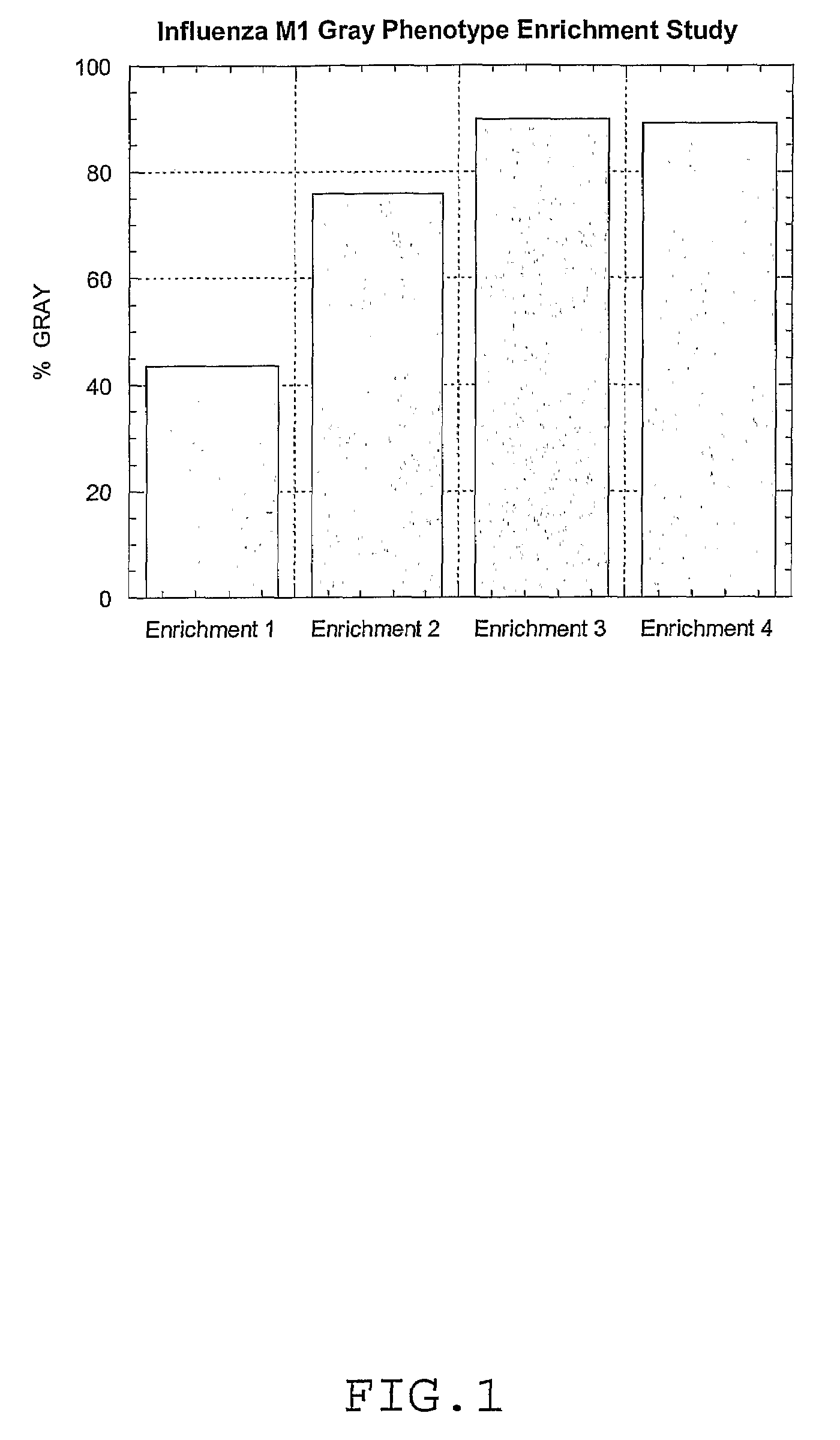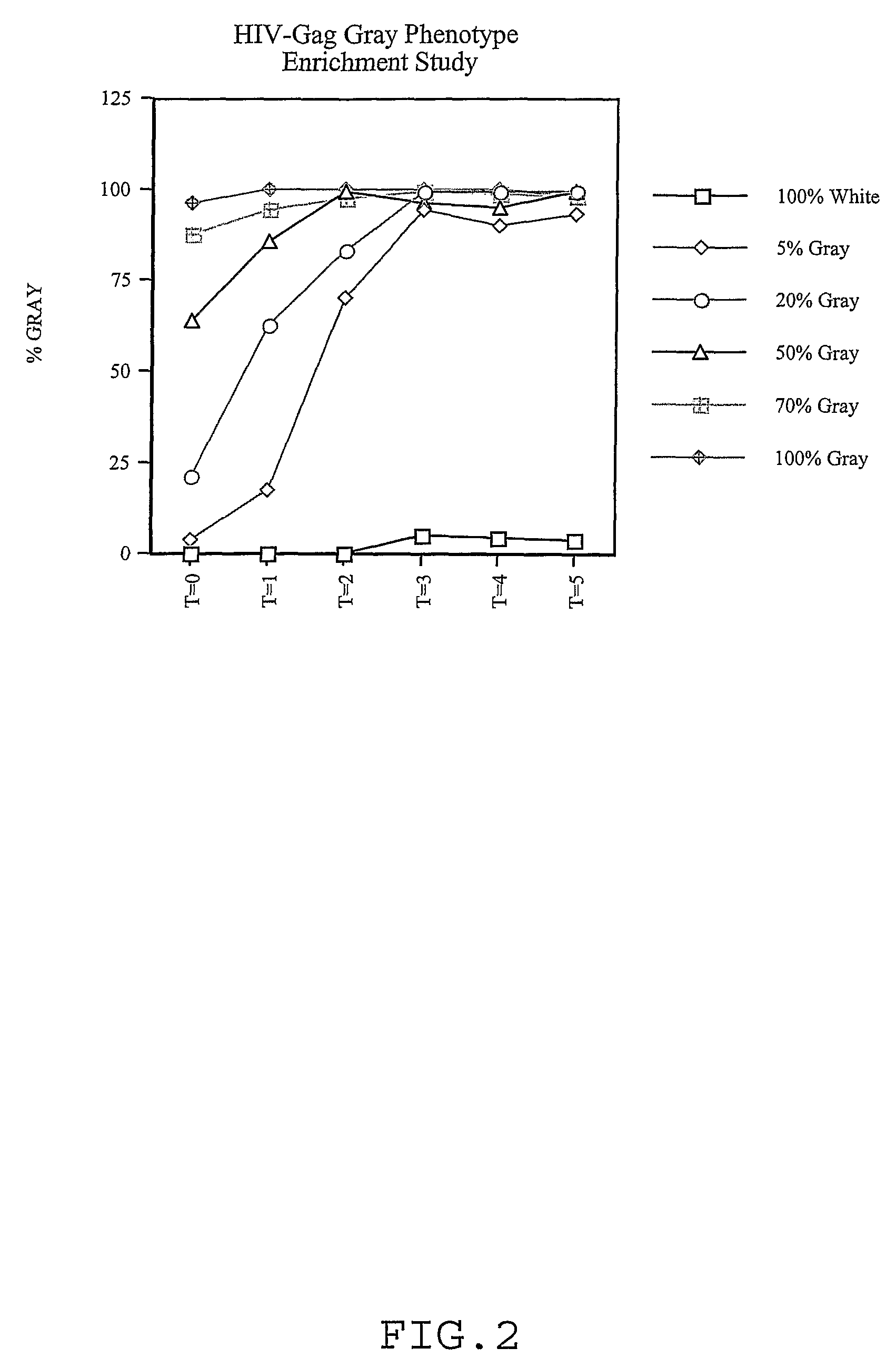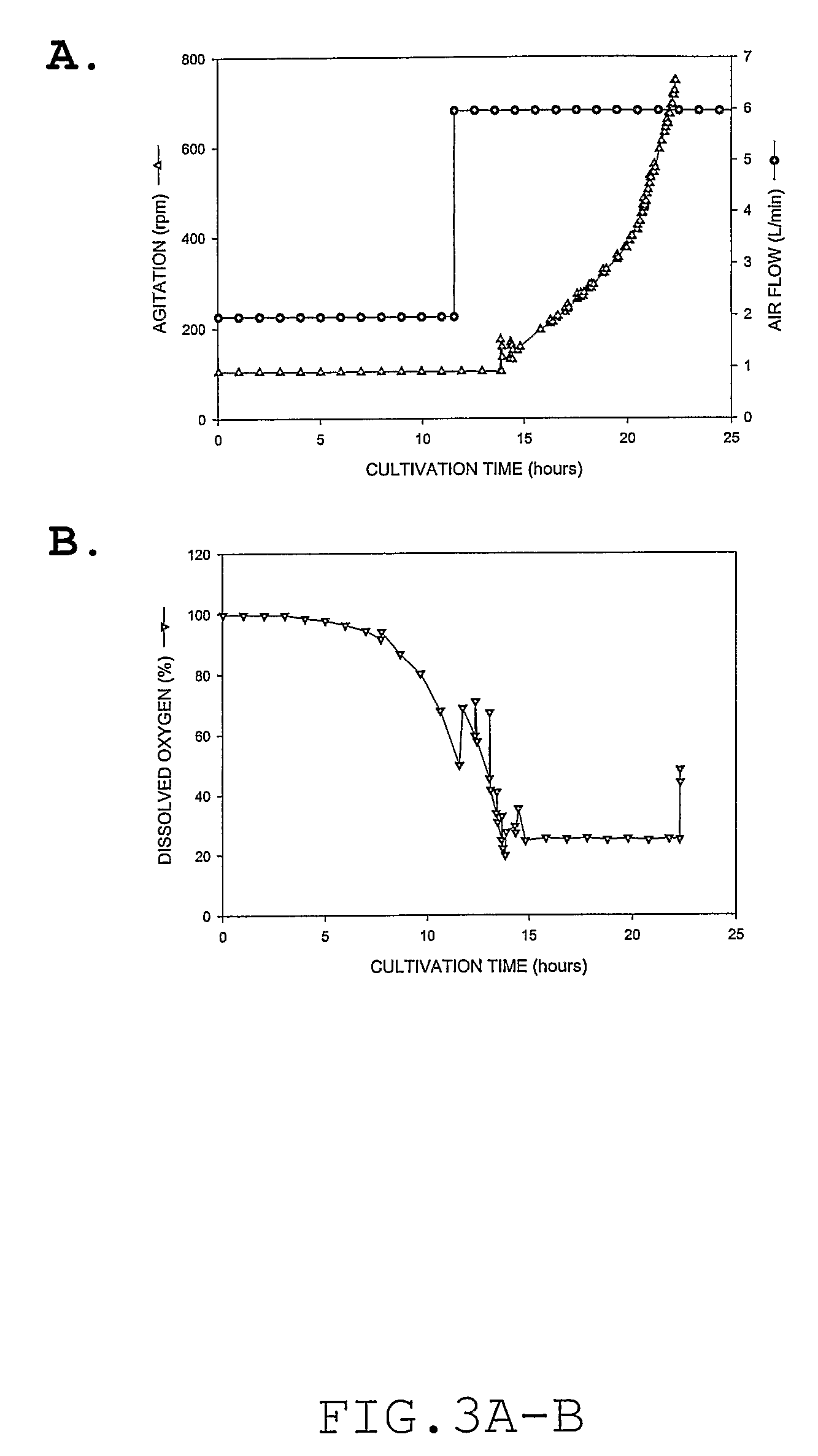Process for large scale production of plasmid DNA by E. coli fermentation
a technology of plasmid dna and fermentation process, which is applied in the field of process for the production of plasmid dna, can solve the problems of difficult scaling up the manufacture and purification of clinical-grade plasmid dna, low volumetric yield (5-40 mg/l), and less is known about optimizing the initial fermentation step of the production process for the generation of plasmid dna. , to achieve the effect of increasing the yield of plasm
- Summary
- Abstract
- Description
- Claims
- Application Information
AI Technical Summary
Benefits of technology
Problems solved by technology
Method used
Image
Examples
example 1
Identification and Evaluation of Two Distinct Phenotypes of E. coli DH5
[0070]Chemicals—All chemicals are of reagent grade and purchased from either the Sigma Chemical Co. (St. Louis, Mo.) or Fisher Scientific Products (Springfield, N.J.). API20E test strips were purchased from bioMerieux (Canada).
[0071]Cultivation Media—DM-P5 chemically-defined medium contains the following ingredients: 7.0 g / L KH2PO4, 7.0 g / L K2HPO4, 6.0 g / L (NH4)2SO4, 5.0 g / L L-Glutamic Acid, 10 g / L glycerol, 0.5 g / L NaCl, and sodium hydroxide to bring the pH to 7.2. The medium was sterilized 30 min in the autoclave, liquid cycle. When cool, a 1:1000 dilution of a trace element mixture is added which consisted of the following trace elements dissolved in 10% HCl and filter sterilized: 27 g / L Ferric Chloride (FeCl3.6H20), 2.0 g / L Zinc Chloride (ZnCl2.4H20), 2.0 g / L Cobalt Chloride (CoCl2.6H20), 2.0 g / L Sodium Molybdate (Na2MoO4.2H20), 1.0 g / L Calcium Chloride (CaCl2.2H20), 1.27 g / L Copper Chloride (CuCl2.2H20), and...
example 2
E. coli DH5 Gray Phenotype Enrichment Study
[0078]Influenza M1 Gray Phenotype Enrichment Study—Separate cultures of white and gray phenotypic colonies containing the Influenza M1 DNA plasmid vector were grown in DM-P5 chemically-defined medium to exponential phase. The cultures were then mixed in equal proportions and used to inoculate a fresh flask of DM-P5 medium. The starting OD600 for each enrichment flask was 0.001. The mixed culture was grown for 17 generations and then inoculated into a second enrichment flask. This ensured that the cells were in exponential growth at each transfer step. This process was repeated for a total of four enrichments. An aliquot of cells was frozen in 40% glycerol (v / v) from each enrichment step and analyzed by the blood agar phenotype screening assay described in Example 1 to determine the percentage of gray phenotypic colonies after enrichment.
[0079]HIV-Gag Gray Phenotype Enrichment Study—A kinetic enrichment experiment was set up using a construc...
example 3
Correlation of Plasmid DNA Concentration to Gray Phenotypic Colonies of E. coli DH5
[0085]Transformation—Two methods were used to transform E. coli DH5 cells to obtain clonal isolates to be screened for plasmid productivity. For the first method, 100 ng (2 μL) of plasmid DNA was added to 100 μL of E. coli DH5 competent cells. Competent cells were prepared using standard molecular biology practices. This mixture was stored on ice for 30 minutes and then subjected to heat treatment at 42° C. for 90 seconds. These tubes were chilled on ice and then 800 μL of DM-P5 medium was added to each tube. These tubes were then incubated at 37° C. for 90 minutes for recovery of antibiotic resistance. The recovered culture was then spread plated onto DM-P5 agar plates and incubated for 36 hours to obtain transformants. The second method of transformation used electro-transformation and the Bio-Rad Pulser (Hercules, Calif.) system. For this procedure, 80 μL of competent cells was mixed with 0.5-4.0 μ...
PUM
| Property | Measurement | Unit |
|---|---|---|
| volume | aaaaa | aaaaa |
| v/v | aaaaa | aaaaa |
| weight | aaaaa | aaaaa |
Abstract
Description
Claims
Application Information
 Login to view more
Login to view more - R&D Engineer
- R&D Manager
- IP Professional
- Industry Leading Data Capabilities
- Powerful AI technology
- Patent DNA Extraction
Browse by: Latest US Patents, China's latest patents, Technical Efficacy Thesaurus, Application Domain, Technology Topic.
© 2024 PatSnap. All rights reserved.Legal|Privacy policy|Modern Slavery Act Transparency Statement|Sitemap



